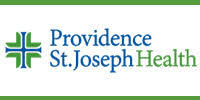- June 15,2025 | ISSN 1940-6967
- The National Association Of Medical Doctors
Featured Sponsors
Deadly Ancient Tomb Fungus Could Help Fight Cancer
By Isabel Ely, PhD
A once-feared fungus known for its deadly spores is now being repurposed for good.
Scientists at the University of Pennsylvania have discovered a powerful anticancer compound hidden within Aspergillus flavus (A. flavus), a toxic fungus historically linked to the mysterious “Pharaoh’s curse” deaths of the first explorers to uncover the tombs of ancient kings, including King Tutankhamun and King Casimir IV of Poland.
Uncovering a new class of cancer killers
The new fungus-derived cancer therapy belongs to a class of natural compounds called ribosomally synthesized and post-translationally modified peptides, or RiPPs. Unlike the many RiPPs already identified in bacteria, few had been found in fungi – largely due to previous misclassification and a limited understanding of fungal biosynthesis.
“The synthesis of these compounds is complex,” said Dr. Qiuyue Nie, a postdoctoral fellow in chemical and biomolecular engineering and the study’s first author. “But that complexity also contributes to their remarkable bioactivity.”
To uncover more fungal RiPPs, the team screened a dozen strains of Aspergillus, a genus previously suspected of producing these compounds. By comparing the chemicals made by these strains with known RiPP precursors, they identified A. flavus as a particularly promising candidate.
Further genetic analysis pinpointed a specific protein in A. flavus as the likely source of RiPPs. When the researchers disabled the genes responsible for producing this protein, the chemical markers associated with RiPPs also vanished.
This integrative approach – linking metabolic profiles with genetic data – not only revealed the RiPP-producing machinery in A. flavus, but also offers a powerful strategy for discovering similar compounds in other fungal species.
Introducing asperigimycins: A potent new medicine
After purifying four different RiPPs, Nie and team discovered that the molecules shared a distinctive structure composed of interlocking rings. They named these newly identified compounds asperigimycins, after the fungus in which they were found.
Even without chemical modification, asperigimycins showed therapeutic potential when tested against human cancer cells, with two of the four variants exhibiting strong activity against leukemia cells. Another variant, enhanced with a lipid molecule also found in royal jelly (a substance that nourishes bee larvae), performed comparably to cytarabine and daunorubicin – two US Food and Drug Administration-approved leukemia drugs that have been in use for decades.
To explore why lipids enhanced asperigimycins' potency, the team used gene editing to toggle specific genes in leukemia cells. They identified SLC46A3 as crucial for enabling asperigimycins to enter cells in sufficient quantities. SLC46A3 plays a role in transporting materials out of lysosomes, the cell's internal vesicles that sequester foreign substances.
“This gene acts like a gateway,” said Nie. “It not only allows asperigimycins into cells but may also enable other cyclic peptides to do the same.”
Like asperigimycins, many cyclic peptides have therapeutic properties – nearly two dozen have been approved since 2000 to treat diseases ranging from cancer to lupus. However, many require modification to achieve adequate cellular uptake.
“Knowing that lipids can affect how this gene transports chemicals into cells gives us another tool for drug development,” Nie added.
Further experiments revealed that asperigimycins are likely interfering with cell division. “Cancer cells divide uncontrollably,” explained senior study author Dr. Xue (Sherry) Gao, Presidential Penn Compact Associate Professor in chemical and biomolecular engineering. “These compounds block the formation of microtubules, which are essential for that process.”
Importantly, asperigimycins had little or no effect on breast, liver or lung cancer cells, as well as on various bacteria and fungi – suggesting a high degree of specificity, a desirable trait for future therapeutics.
The road ahead
Beyond their immediate therapeutic potential, the team discovered similar RiPP-producing gene clusters in other fungi – suggesting a vast, untapped source of drug candidates.
“Even though only a few have been found, almost all of them have strong bioactivity,” said Nie. “This is an unexplored region with tremendous potential.”
Next, the team will test asperigimycins in animal models with an eye toward human trials.
“Nature has given us this incredible pharmacy,” said Gao. “It’s up to us to uncover its secrets. As engineers, we’re excited to keep exploring, learning from nature and using that knowledge to design better solutions.”
Reference: Nie Q, Zhao F, Yu X, et al. A class of benzofuranoindoline-bearing heptacyclic fungal RiPPs with anticancer activities. Nat Chem Biol. 2025:1-10. doi: 10.1038/s41589-025-01946-9
Articles in this issue:
- Peer-to-Peer Prior Authorization: Is Physician Participation Ethical?
- When Doctors Forget How To Examine: The Danger Of Lost Clinical Skills
- Providers Still Topping Health Plans In Most Disputes Over Out-Of-Network Payments
- Can Lifestyle Changes Save Lives In Colon Cancer?
- USMLE Raises Step 2 Pass Score
- First Impressions Happen Online—Not In Your Exam Room
- Deadly Ancient Tomb Fungus Could Help Fight Cancer
Top Physician Opportunities
Journal of Medicine Sign Up
Get the Journal of Medicine delivered to your inbox.
In This Issue
- Peer-to-Peer Prior Authorization: Is Physician Participation Ethical?
- When Doctors Forget How To Examine: The Danger Of Lost Clinical Skills
- Providers Still Topping Health Plans In Most Disputes Over Out-Of-Network Payments
- Can Lifestyle Changes Save Lives In Colon Cancer?
- USMLE Raises Step 2 Pass Score
- First Impressions Happen Online—Not In Your Exam Room
- Deadly Ancient Tomb Fungus Could Help Fight Cancer
Archives
Masthead
-
- Editor-in Chief:
- Theodore Massey
- Editor:
- Robert Sokonow
- Editorial Staff:
- Musaba Dekau
Lin Takahashi
Thomas Levine
Cynthia Casteneda Avina
Ronald Harvinger
Lisa Andonis
Leave a Comment
Please keep in mind that all comments are moderated. Please do not use a spam keyword or a domain as your name, or else it will be deleted. Let's have a personal and meaningful conversation instead. Thanks for your comments!















*This site is protected by reCAPTCHA and the Google Privacy Policy and Terms of Service apply.